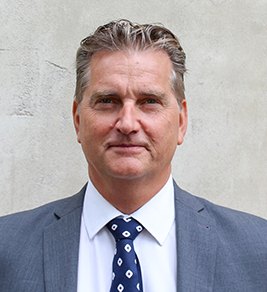How we consume, how we travel, how we heat our homes. Many far-reaching changes will be necessary to prevent further climate change. But who will end up paying for them?
Spanning across timezones and academic fields, Nordregio launched the report with a widely anticipated online event last week, with the title: “What impact do climate change policies have on Nordic economies, industries, and households?” The newly launched report is the first of four parts to the project Ensuring Inclusive Growth in the Transition to a Green Economy (EnIGG). The primary focus of this project is to look closer at vulnerable regions and population groups in a time where Nordic economies face grand transitions and looming climate change realities.

Ambitious climate goals will not be met for free, but who will pay the highest price for them? This question was the central theme of the launch event. The report is based on a complex model that measures the impact of climate policies on GDP, industry outputs, employment and cost of living at national and regional levels. The model, called Nordic-TERM, is a newly developed and covers almost the entire Nordic Region.
Professors Peter B Dixon and Maureen Rimmer demonstrated this model by showing the audience what happens when you estimate the impact of three central greenhouse policies:
- Increasing the biofuel share in motor fuels
- Increasing the share of electric vehicles in the Nordic car fleets
- Phasing-out all remaining coal-fired electricity
The key finding is that ambitious climate policies related to transport and energy can be implemented without causing significant disruptions to the Nordic economies. With the exception of Sweden, these policies would not be sufficient to meet climate targets, but they would go a long way in reducing emissions without significant sectoral or structural effects.
“Dull results like this can be used as an argument against those who oppose climate policies on the basis that they might be unfair. Unless you have results or analysis of this type, that prove the fairness, you’re left quite defenseless against these arguments.”
Ending the presentation with this insightful perspective on the value of this report, the audience was led straight into the panel debate, moderated by Kirsi Heikel, renowned journalist and senior advisor at Miltton. The panel featured experts, each offering their thoughts on the report.
Vincent Otto at Konjunkturinstitutet in Sweden praised the detailed analysis and highlighted the real-world challenges of implementing these policies. Mattias Goldmann, leading the Swedish Secretariat 2030, problematised the report results by framing them against the current political reality in Sweden.
“Peter, you said it was hard to find a problem with the policies. Here is a problem – Sweden meeting its target goals is not going to happen. The policy makers frame this as being much more expensive than it is.”
Goldmann emphasized the importance of changing the narrative around climate policies. The behavioural aspect has to be taken into account, so it’s not just policies driving the change, but the people too. He exemplified this point by mentioning labour unions who are now pushing for a renewable transition.
Jóhannes Bjarki Urbancic Tómasson from Iceland’s Environment Agency highlighted the low cost and multiple benefits of these policies:
“If there are negligible costs, why aren’t we doing these policies already? A lot of these policies, even if you take climate change out of them, are just good policies.”
Regarding households, the financial impact of the climate policies was generally small, but rural households were somewhat more affected. The discussion revolved around possible support mechanisms, taxation, the “polluter pays” principle, and the importance of targeted support. Juha Honkatukia, one of the economists involved in this research and report, pointed out that while there is a slightly negative impact on rural household economies, the overall impact on households was minimal:
“If you have losers, the effects are so small it’s not even relevant to talk about losers. It’s inevitable that there will be small differences.”
The event concluded with a discussion about the future steps in the context of European climate policy. The European Commission is preparing its proposal for the EU’s climate policy for the 2030s, and the Nordic countries have a crucial role to play.
“The EU sets yearly targets and we in the Nordics set long-term targets. That’s not good because it’s too easy to take it easy in the first period of long-term targets. So in this respect the EU’s goal structure is superior to the Nordic model. “
This was the final statement from panelist and professor emeritus of international economics Harry Flam from Sweden. While the debate highlighted the need to build trust, reframe climate policies, and address the concerns of marginalized groups, the event and report as a whole opened the door to further reflections on even stronger cooperation among Nordic countries and harmonizing policy instruments with the EU to meet the “Fit-for-55” goals.
The Nordic Region is poised to make significant contributions to the global fight against climate change. This launch event underlined how it is in fact possible to be ambitious without causing massive shocks to our economies and households. The report also cemented the importance of continued research and cooperation to achieve these goals.
The project will continue to publish new findings – follow EnIGG’s work here.
Watch or re-watch the event:





